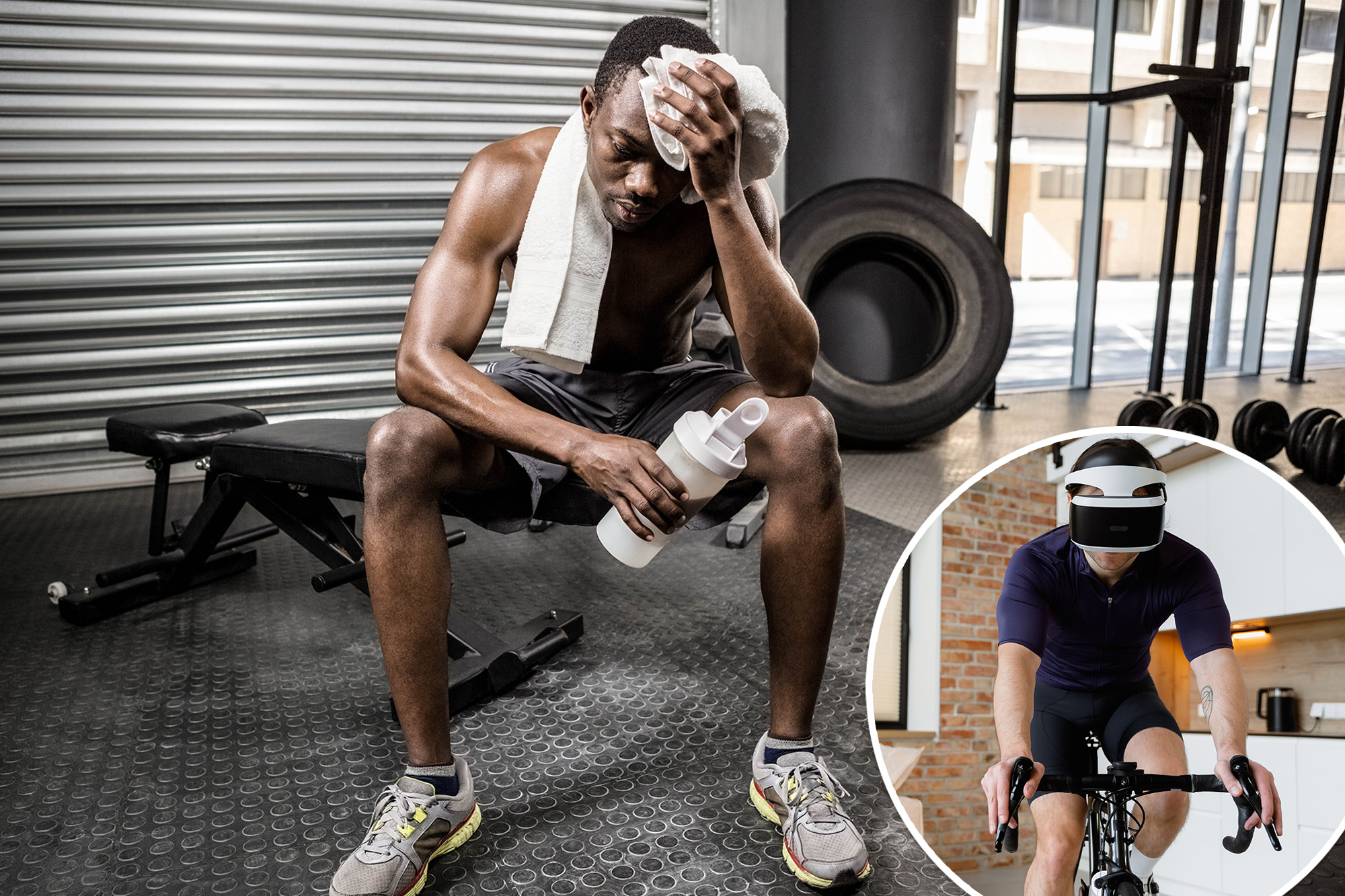A little sweat never hurt anyone, but overheating? This is a totally different beast.
Whether you are getting up in a gym that looks like an oven or crossing a wave of heat, we all had those moments when we are about to fuel spontaneously.
The cool news: Scientists have just discovered a visual hack that deceive your body to relax – and it’s the last thing you would expect.
Sweating
For the study, the researchers recruited five women at the university age to ride a stationary bicycle to 72 ° F while arresting virtual reality earphones, exploring scenes in the “Nature Treks VR” application.
Those visualizing the “red earth” were transported to the Australian interior, immersed in reds, oranges and yellows that evoked the suffocating heat of the desert.
Meanwhile, others have ventured into the icy world of “White Winter”, where snow -covered valleys and ice -pominated trees prepare the ground for a much cooler vibration.
When the researchers compared participants’ reactions to both RV environments, they found that their central body temperatures increased much less when immersed in the hot scene than in the cold.
“Our findings suggest that simply seeing a warm environment can act as a powerful stimulus for thermoregulatory processes, and can play a larger role than we thought earlier,” said Natasha Ragland, postgraduate student at Boston University and first author of the study.
An increase in sweat while immersing the hot VR scene probably explains the difference, helping the body cool more efficiently during exercise, the researchers explained.
In fact, participants surpassed about 20 grams more when exposed to the hot landscape than when they see the frozen, providing an extra cooling boost for their bodies.
Researchers have suggested that future studies could investigate RV as an economic tool to help extreme heat workers adapt faster, potentially increasing their health and safety.
“Athletes or military may be able to train for more extreme environments without having to physically travel to these areas,” Ragland said.
The human toll of overheating
A healthy body temperature usually varies between 97.6 ° F and 99.6 ° F. But when its internal thermostat rises very high – either due to exposure to heat, fever, intense exercise or other causes – it can quickly become dangerous.
There are three main types of heat -related diseases, according to Johns Hopkins.
Thermal cramps are the smoother shape, involving cramps and painful muscle spasms that occur during or after intense physical activity under hot conditions.
Heat exhaustion is more severe. This happens when the body loses large amounts of water and salt through heavy perspiration, usually after extended time in heat or extending physical activity. Symptoms include muscle cramps, pale and damp skin, nausea, vomiting, headache, fatigue, weakness and anxiety.
Insolation is the most severe – and potentially deadly – form. This medical emergency occurs when the body temperature regulation system is overloaded, increasing nucleus temperatures to 104 ° F or more.
Slimming signs of insolation include hot, dry and flushed skin, without sweating, rapid heart rate, nausea, vomiting, headache, confusion, agitation, seizure hallucinations – and in extreme cases, coma or death if they are not treated.
Overheating? Relax – Fast
If you start overheating the session in the midst of the defense-e-east you at the gym or grinding it under the sun-sun immediately.
The Mayo Clinic recommends finding a dark point or entering a space with air conditioning to help knock the body.
Moisturize with water or a sports drink and remove the extra layers. If you are still roasting, jump in a cold shower, dive into a cold bath or press ice bags in your neck, wrists and armpits.
If symptoms do not make it easier within an hour, it may be exhaustion by heat – or even heat tanks. Do not strive. Get medical help quickly.
#overcome #gym #visual #trick #body #cool
Image Source : nypost.com
